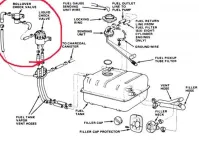Mystery clamp and hose
Colo Dean
Jeeper
- Posts
- 136
- Thanks
- 0
- Location
- Greeley Co
- Vehicle(s)
- 74 CJ5 258 I-6, 4 spd T-18, Dana 20 T/C, Dana 30 Front, Dana 44 Rear 4.27:1, still learning everything about this one, 14 JK pretty much stock
Slowly working on the tear down. (74 CJ5 ) Working at the drivers front fender, and when I removed the washer fluid container I noticed this round bracket below along with a plastic hose.

Anyone know what it supposed to be mounted in the round bracket?
Also wondering about the plastic tube. I followed the tube along the frame rail to the rear corner where it goes up behind the drivers brake light to some other plastic part (not trying to sound stupid here just dont know what it is) I believe it to be some sort of emissions parts??? It also has 2 red plastic tubes that come off of it and looks like they should go to the fuel tank. I see 2 ports on the fuel tank that have been plugged. Is this some sort of return or vent for the fuel?
Ending point behind brake light

2 red tubes near fuel tank

Should the red tubes be hooked back up to the fuel tank or are they not needed?
Thanks in advance

Anyone know what it supposed to be mounted in the round bracket?
Also wondering about the plastic tube. I followed the tube along the frame rail to the rear corner where it goes up behind the drivers brake light to some other plastic part (not trying to sound stupid here just dont know what it is) I believe it to be some sort of emissions parts??? It also has 2 red plastic tubes that come off of it and looks like they should go to the fuel tank. I see 2 ports on the fuel tank that have been plugged. Is this some sort of return or vent for the fuel?
Ending point behind brake light

2 red tubes near fuel tank

Should the red tubes be hooked back up to the fuel tank or are they not needed?
Thanks in advance


